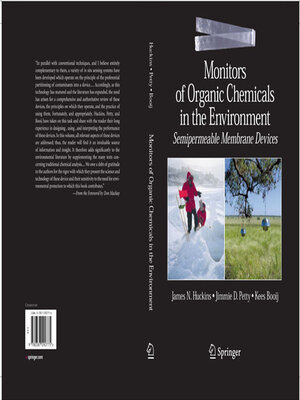Monitors of Organic Chemicals in the Environment
ebook ∣ Semipermeable Membrane Devices
By James N. Huckins

Sign up to save your library
With an OverDrive account, you can save your favorite libraries for at-a-glance information about availability. Find out more about OverDrive accounts.
Find this title in Libby, the library reading app by OverDrive.



Search for a digital library with this title
Title found at these libraries:
| Library Name | Distance |
|---|---|
| Loading... |
Modern, industrialized societies depend on a wide range of chemical substances such as fuels, plastics, biocides, pharmaceuticals and detergents for maintaining the high quality lifestyle to which we aspire. The challenge is to ensure that while weenjoythebene?tsofthesesubstances,theirinevitablereleaseintoourbiosphere does not result in unwanted human and ecosystem exposures, and the risk of - verse effects. One response to this challenge has been the extensive effort to detect and analyze or monitor a multitude of chemicals in a variety of environmental media, especially toxic organic compounds in air, water, soils and biota. The c- ventionalmonitoringstrategyofsamplinglitersorkilogramsoftheenvironmental medium followed by analytical determination of the quantity of chemical in the sample extract has been the successful cornerstone of investigative environmental chemistry. No doubt, it will continue to be so. An extensive literature on these traditional techniques has evolved over the years. In parallel with conventional techniques, and I believe entirely complem- tary to them, a variety of in situ sensing systems have been developed which operate on the principle of the preferential partitioning of contaminants into a - vice, often at concentrations which are large multiples of environmental levels. Advocates point out that these partitioning devices have the advantage of integr- ing chemical concentrations over a prolonged period, thus "averaging" ambient levels. Their high partition coef?cients can yield signi?cant quantities of analyte and reduce problems arising from short-term pulses of concentration and from sample contamination.







